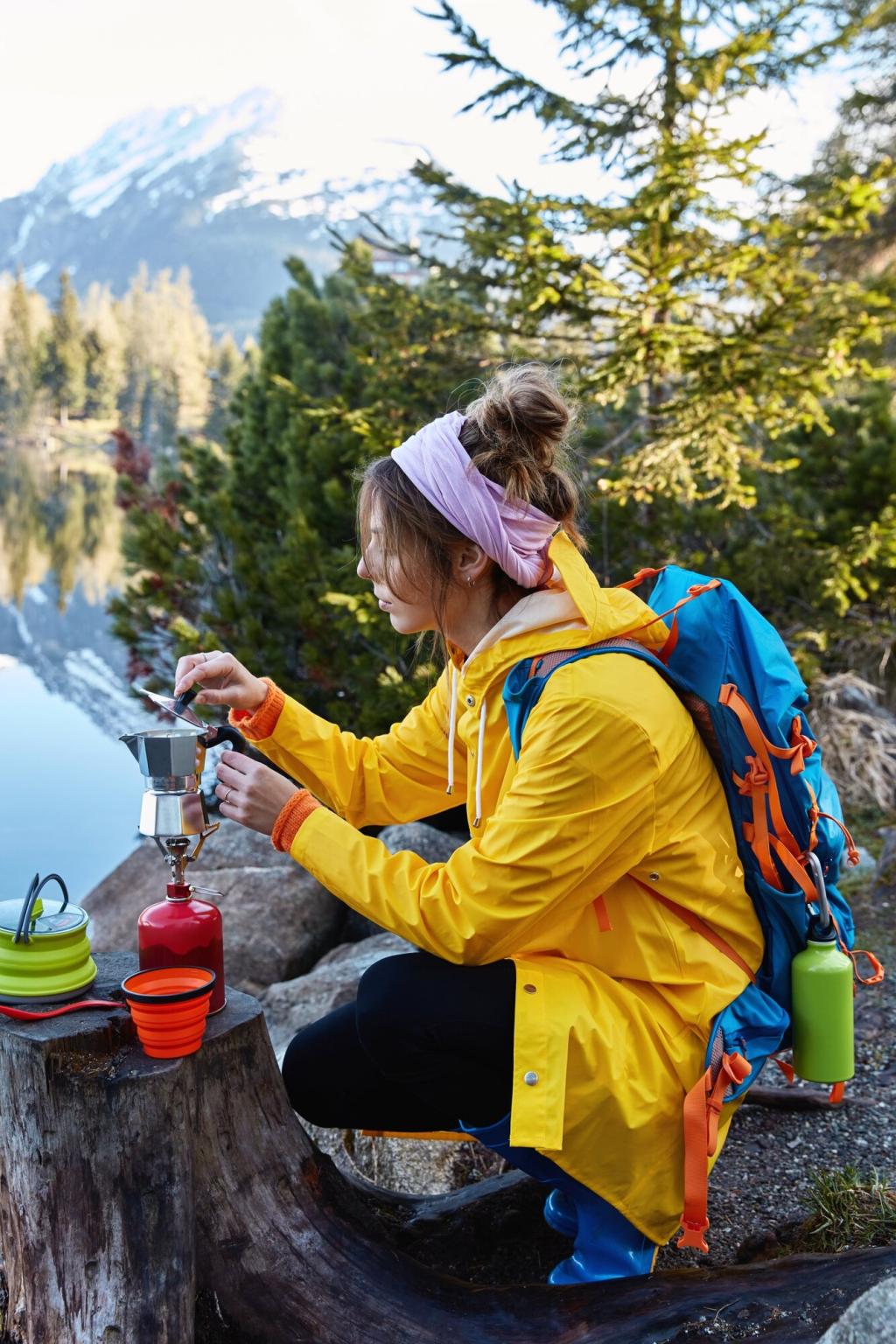Protecting Against Wildlife Encounters on Mountain Trails
Chosen theme: Protecting Against Wildlife Encounters on Mountain Trails. Step onto the ridge with calm confidence as we turn trail wisdom, true stories, and practical tactics into your safest, most respectful mountain miles yet. If this theme resonates, subscribe for future safety briefs and share your own insights with our community.
Know the Neighborhood: Habitats, Patterns, and Mountain Ecology
Animals follow food and shelter. In spring, elk and goats climb with greening slopes; in late summer, bears comb berry-choked gullies. During heat or storms, many species move lower. Study local migration maps before you hike, and bookmark wildlife calendars to plan quieter routes on high-traffic animal corridors.
Know the Neighborhood: Habitats, Patterns, and Mountain Ecology
Fresh tracks, turned stones, dug-up roots, and saplings snapped at chest height tell real-time stories. Bear scat packed with berries can cue a feeding zone ahead. Moose browse leaves ripped rather than clean-cut. Pause, read the signs, and decide whether to detour. Share track photos with rangers to improve trail advisories.

Prevention First: Make Noise, Keep Distance, Move Smart
01
Consistent, natural sound works: hold a relaxed conversation, clap before blind curves, sing a chorus near rushing creeks. Bear bells are debated; they can blend with stream noise. Mix it up with periodic voice calls. What’s your go-to noise ritual? Share it so others can learn without turning a hike into a parade.
02
Give at least 25 yards (23 meters) to most wildlife and 100 yards (91 meters) to bears and wolves, mirroring common park guidelines. Use range markers like two football fields for larger predators. If you accidentally end up closer, back away slowly, eyes scanning for cubs or calves, and never cut off an animal’s escape.
03
Hike in groups of three or more, keep kids between adults, and leash dogs to reduce chase triggers. Maintain a steady pace through dense brush. Avoid running, which can flip a switch in predators and startle grazers. Parents, what trail games keep kids vocal and engaged? Drop your best ideas for fellow families.
Bear-Smart on Steep Terrain
Before You Go: Spray, Storage, and Scent Discipline
Carry bear spray where legal, within quick reach—holstered on your hip or shoulder, never buried in a pack. Practice the motion with an inert canister. Stow snacks in odor-resistant bags and keep wrappers sealed. Plan cooking zones far from sleeping areas. Download our checklist by subscribing, and refine your routine before the trailhead.
The Encounter: Read the Bear, Not Your Fears
Speak calmly, stand your ground briefly, then back away slowly. Do not run. If a grizzly makes a defensive bluff charge, hold steady and ready spray. If contact seems predatory, especially with a black bear, fight back with everything you have. Know your local species and rehearse actions until they feel natural.
Camp Craft in Bear Country
Cook, sleep, and store food in a wide triangle, ideally 70 meters apart when possible. Hang food 12 feet up and 6 feet from the trunk, or use certified bear canisters. Strain dishwater and pack out scraps. Sketch your camp layout and share it with readers; we all learn from thoughtful, tidy systems.
Mountain Lions, Coyotes, and the Art of Looking Bigger
Early Warnings and Body Language
Notice tail twitches, head-low stalking, or animals using cover to shadow your movement. Make eye contact without staring aggressively. Stand tall, lift a jacket or pack to enlarge your silhouette, and keep talking in a firm voice. Never crouch. Keep children close and visible, and avoid splitting the group around obstacles.
Dogs and Small Hikers: Protection Strategies
Leash dogs; a sprinting pup can trigger pursuit and bring predators back to you. Use a sturdy harness and keep leashes short in brushy canyons. Pack a headlamp and an air horn for dawn or dusk. Practice recall cues at home. Parents, share how you balance exploration and safety on narrow switchbacks.
If It Doesn’t Back Off: Assertive, Not Aggressive
Hold your ground, wave arms high, and throw stones toward the animal’s feet, not its head. Maintain eye contact and do not turn your back. Retreat deliberately, protecting kids and pets. Report sightings to local rangers to help others plan. If you’ve filed a report before, tell us how the response helped.
Pinned ears, a rigid stance, raised hackles, or lip-licking in moose spell trouble. Goats stomp before lunging. Elk pivot quickly during bugling season. Put a tree, rock, or contour between you and the animal. Never step between a mother and calf. Comment with a photo guide you trust for field recognition.
Moose, Elk, and Mountain Goats: Give Hooves Room to Choose
In autumn rut, bulls are amped and unpredictable; in spring, mothers guard calves. Avoid meadows and river crossings known for seasonal gatherings. Take longer detours and celebrate the extra mileage as training. Share your alternate routes so readers can protect wildlife and still reach those summit views safely.
Moose, Elk, and Mountain Goats: Give Hooves Room to Choose
Footwork: Step On, Not Over
Step on logs first, then place your foot beyond where you can see. Use poles to probe grassy edges and sun-warmed rocks. Watch for coiled shapes and buzzing warnings. If you photograph a safe, distant sighting, share your best identification resources to help others learn without approaching wildlife.
Hands Where You Can See
When scrambling, visually confirm every hold before committing. Don’t reach into cracks, burrows, or brushy holes. Shake out boots and sleeping bags before use. Lightweight gloves can deter bites and scrapes while gathering wood. What glove models have saved your knuckles? Add your picks to help new hikers gear up thoughtfully.
Bites, Stings, and First Aid Priorities
If bitten by a venomous snake, immobilize the limb at heart level and seek medical care promptly. Don’t cut, suck, or tourniquet. For stings, remove the stinger and watch for systemic reactions. Pack antihistamines and a communication device. Subscribe for our printable first-aid checklist and share what lives in your kit.
Trail Tale: The Day a Black Bear Taught Me Patience
We rounded a bend into a huckleberry bowl and saw dark ears lift. We spoke softly, stepped back together, and gave the slope ten long breaths. The bear kept feeding, then drifted away. We finished with calmer hearts—and a decision to practice our retreat every month. Share your steady, uneventful wins.
Mental Rehearsal: What-Ifs You Should Practice
Before the trailhead, rehearse commands, backing away, and deploying spray. Kids can practice staying close by playing a call-and-answer game. Partners can role-play lion encounters without dramatics. These minute-long reps turn nerves into muscle memory. Subscribe to get simple scenario cards you can run in your driveway tonight.
Stay Connected: Alerts, Courses, and Local Experts
Follow ranger stations, wildlife reports, and avalanche centers that also flag seasonal animal movement. Volunteer on trail days to learn habitat firsthand. Sign up for our newsletter for expert Q&As and local course calendars, and comment with your favorite regional resources so others can hike smarter in your mountains.
